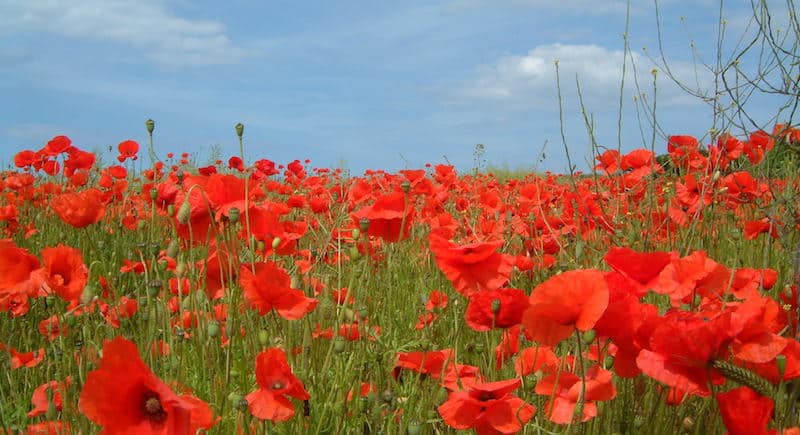Poppy Anzac Day: A Guide for Parents to Share the Significance with Kids
Hey there, wonderful parents! ? Are you looking for thoughtful ways to introduce your kids to the deep-rooted traditions and heartfelt remembrances of Poppy Anzac Day? Well, you’ve landed in just the right spot! April 25th is a special day on our calendar, one filled with poignant history and valuable lessons for all ages. So, grab a cozy seat, as we embark on a gentle journey to unpack the significance of this day and find fun, age-appropriate activities to honor it with our little ones. Let’s create lasting memories and meaningful conversations together!
Understanding Poppy Anzac Day
First things first, what exactly is Poppy Anzac Day? It’s a day when Australia and New Zealand come together to remember the brave soldiers who served and sacrificed during wars, conflicts, and peacekeeping operations, particularly in World War I. ANZAC stands for Australian and New Zealand Army Corps, and the poppy has become a symbol of remembrance, a bright red emblem that blooms from the fields where many soldiers once valiantly fought.
The Historical Roots of Anzac Day
Let’s delve into the history just a little – not too much – because we know kiddos prefer the fun stuff! Anzac Day dates back to April 25, 1915, when ANZAC troops landed on the Gallipoli Peninsula in Turkey. Despite the bravery, the campaign was tough, and many lives were lost. However, the spirit of ‘mateship’ and heroism lived on, minting this day into our historical fabric. Fast forward to today, it’s our opportunity to pay homage to these heroes.
Why Do We Wear Poppies?
The first person who might pop – no pun intended – a question about this day could be your curious little one, eyeing the bright red poppy pin on your shirt. “Mummy, Daddy, why do we wear this flower?” An excellent question indeed! Poppies grew on the former battlefields after World War I and became a symbol of new life amidst the devastation. By wearing a poppy, we’re not just adding a splash of color to our attire; we are keeping the spirit of remembrance alive.
How to Explain the Importance to Kids
Explaining the essence of Poppy Anzac Day to children may seem daunting, but fear not – simplicity is key. Here’s a gentle approach: “Today is a very special day when we remember some extraordinary people who helped make our world a safer, better place.” Understanding the sacrifices made assists in nurturing a sense of respect and gratitude in our young ones.
Tips for Sharing Anzac Day with Youngsters
- Respectful Storytelling: Start with an age-appropriate story or book that explains Anzac Day in a way that’s easy for kids to grasp and connect with emotionally.
- Create a Poppy Craft: Engage little hands in making paper poppies, fostering both creativity and conversation about the significance of the poppy.
- Attend a Local Service: If possible, take your children to a local Anzac Day service. The communal spirit helps them witness the collective act of remembering.
Above all, Poppy Anzac Day is about togetherness, reflection, and imparting valuable lessons to the younger generation. As parents, we have a wonderful opportunity to guide our children through this day with sensitivity and pride. So, let’s share the stories, wear our poppies with respect, and ensure the Anzac legacy endures in the hearts and minds of our children. Stay tuned as we explore more engaging activities to make this Poppy Anzac Day a defining moment for your family!
Get ready! In the next segment, we’ll dive deeper into each of these activities and provide step-by-step instructions for a meaningful, memorable, and yes, fun Poppy Anzac Day. Can’t wait to see the connection blossom between your family and this significant day in our history. Stay bright and inspired!

5 Things Parents Should Know in Preparing for Poppy Anzac Day
1. Understanding the Background and Significance
Before the day approaches, take some time to refresh your own knowledge about Anzac Day. The more you know, the better prepared you’ll be to answer questions from inquisitive minds. You don’t need to be a historian; just a basic understanding of why the day is observed and what the poppy signifies – remembrance and the sacrifices made by soldiers – will enrich the discussions you’ll have with your children.
2. Choosing Age-Appropriate Activities
Children of different ages will engage with Anzac Day in various ways. For younger kids, crafts such as making poppies or drawing Anzac Day parades may be fitting. Older children might be ready for more detailed stories or could engage in writing letters to veterans. Select activities that match your child’s developmental stage to ensure they are involved and interested.
3. Demonstrating and Encouraging Respect
Respect is a central tenet of Poppy Anzac Day. Discuss the importance of observing moments of silence, listening to veterans’ stories, and understanding the solemnity of the occasion. Instilling these values helps children grasp the gravity and poignancy of the day.
4. Participation in Community Events
Whether it’s attending a dawn service or watching a parade, participating in community events can give children a sense of belonging and show them how commemoration brings people together. Check local listings for family-friendly activities or services that are suitable for children’s attendance.
5. Preparing for Emotional Topics
Some aspects of Anzac Day can touch on heavy themes, so it’s essential to prepare for any questions children may have concerning war and death. Tailor your responses based on their age and maturity levels, ensuring you offer comfort and reassurance while providing factual, honest answers.
Engaging Activities for Children on Poppy Anzac Day
Make Your Own Red Poppy Pins
An engaging craft activity is to create red poppy pins. Using red tissue paper, black buttons, and safety pins, you can guide your children in making their own poppies to wear. This hands-on activity is not just a creative outlet; it’s a visual reminder of the day’s significance.
Prepare Traditional Anzac Biscuits
Baking Anzac biscuits with your children is both educational and delicious. Share the history behind the biscuit, originally sent to soldiers by their loved ones, as you enjoy the sweet aroma filling your kitchen. Plus, cooking together is always a recipe for heartwarming family moments.
Write Letters or Create Cards for Veterans
A wonderful way to engage older children is to write letters or make cards expressing gratitude for veterans’ service. This activity encourages empathy and allows children to personally connect with the day’s meaning. These tokens of appreciation can be sent to local veterans’ organizations or hospitals.
Remember, Poppy Anzac Day is a time for reflection, but it’s also an opportunity to encourage our kids to learn about history, community, and the value of remembrance through engaging and thoughtful activities. By preparing in advance and selecting suitable activities for your family, you can ensure that this Poppy Anzac Day is a meaningful, educational, and reverential experience for everyone. Let’s nurture the spirit of Anzac Day in our children and watch as they carry this legacy forward into the future.
Stay tuned as we continue to explore the stories and legacies intertwined with Anzac Day, aiming to deepen our collective appreciation for the day’s historical and social significance. As we share and remember together, we strengthen the bonds of community and keep alive the memories of heroes past.
For more great fun click here. For more information see here
Disclaimer
The articles available via our website provide general information only and we strongly urge readers to exercise caution and conduct their own thorough research and fact-checking. The information presented should not be taken as absolute truth, and, to the maximum extent permitted by law, we will not be held liable for any inaccuracies or errors in the content. It is essential for individuals to independently verify and validate the information before making any decisions or taking any actions based on the articles.




